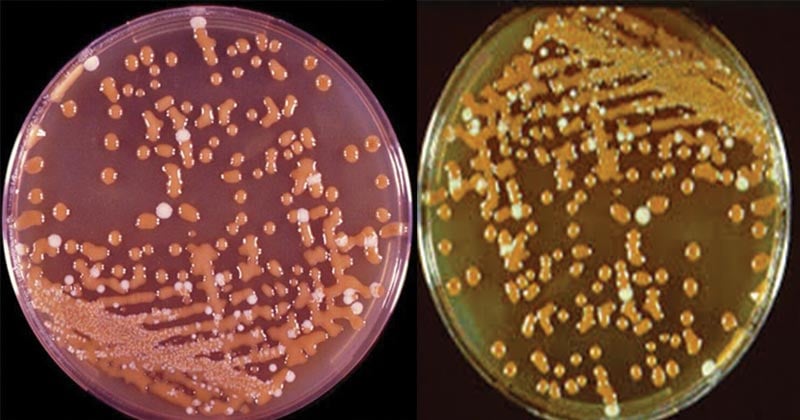Bird Seed Agar is a solid medium used for selective and differential isolation of Cryptococcus neoformans from clinical specimens. It is used for the selective isolation of Cryptococcus neoformans and C. gattii. C. neoformans usually grows as a yeast (unicellular) and replicates by budding. Cryptococcus neoformans is an encapsulated yeast that produces the enzyme phenoloxidase, an enzyme necessary in melanin synthesis. The brown pigmented colonies of Cryptococcus neoformans were observed by Staib in 1962 when he grew cultures of the yeast on media containing Guizotia abyssinica seeds. It was later determined that the seeds contain caffeic acid, which served as the melanin-producing substrate. Birdseed agar became a generic name for the Staib’s agar medium. In 1966, Shields and Ajello modified Staib’s Birdseed Agar by adding the antibiotic to make it more selective. It is also known as Caffeic Acid Agar or Niger Seed Agar or Staib Agar.
Interesting Science Videos
Composition of Bird Seed Agar
| Ingredients | Grams/Litre |
| Guizotia abyssinica (niger seed) | 50 |
| Glucose | 1 |
| KH2PO4 (potassium dihydrogen orthophosphate) | 1 |
| Creatinine | 1 |
| Agar | 15 |
Final pH 6.5 +/- 0.3 at 25ºC.
Additives: to each 500 ml bottle.
- Penicillin G (20 units/ml) 1 mL
- Gentamicin (40 mg/ml) 1 mL
Principle of Bird Seed Agar
Birdseed agar comprises Guizotia abyssinica seeds, creatinine, and dextrose which provide nutrients for the growth of C. neoformans. The extract of Guizotia abyssinica seeds contains caffeic acid which serves as a substrate for the detection of phenoloxidase, an enzyme produced by C. neoformans. The action of phenoloxidase on caffeic acid results in the production of melanin which is absorbed by the yeast cell wall forming a tan to reddish-brown pigmentation. Glucose is the energy source in the medium. Creatinine enhances the melanization of some strains of C. neoformans. Antibiotic added such as chloramphenicol inhibits the bacteria as well as rapidly growing molds that often overgrow the slow-growing dimorphic fungi. Agar is the solidifying agent.
Preparation of Bird Seed Agar
- Mix the grinded seeds of Guizotia abyssinica with 1000 ml of distilled water.
- Boil for 30 minutes, pass through filter paper and adjust volume to 1000 ml.
- Add remaining ingredients to filtrate and dissolve.
- Autoclave at 110°C for 15-20 minutes.
- Cool to 48°C and add 0.5 ml Penicillin G and 0.5 ml Gentamicin to each 500 ml of Bird Seed Agar.
- Mix gently and pour into petri dishes
Result Interpretation of Bird Seed Agar

| Result | Colony characteristics | Organisms |
| Positive | Development of brown to black pigmented smooth colonies. | Cryptococcus neoformans |
| Negative | Non-pigmented colonies | Cryptococcus laurentii, Saccharomyces cerevisiae |
Uses of Bird Seed Agar
- It is used for the selective isolation and differentiation of Cryptococcus neoformans from other yeasts, including other Cryptococcus species obtained from different clinical and environmental samples.
Limitations of Bird Seed Agar
- Rare strains of C. neoformans may not produce pigmented colonies
- Specimens heavily contaminated with bacteria may obscure growth and/or pigmentation of C. neoformans.
- Aureobasidium, Sporothrix, Wangiella and Phialophora may produce dark brown colonies, but the pigment will not be a result of enzymatic activity which is made evident by pigmentation developing in colonies on all media.
- Organisms that produce pigmentation on bird seed agar should be compared with growth of the same organism on another medium such as Sabouraud Dextrose agar, in order to determine and cross check if the organism is naturally pigmented.
References
- Bird Seed Agar. Mycology Online.
- Ronald M. Atlas and James W. Snyder. Handbook of media for clinical and public health microbiology. CRC Press. 2014 by Taylor & Francis Group, LLC
- http://himedialabs.com/TD/M675.pdf
- https://catalog.hardydiagnostics.com/cp_prod/Content/hugo/CaffeicAcidAgar.htm
- https://www.labce.com/spg603077_recommended_procedure_for_identification_of_crypto.aspx
- https://tools.thermofisher.com/content/sfs/manuals/IFU8172.pdf
- Pham CD, Ahn S, Turner LA, Wohrle R, Lockhart SR. Development and Validation of Benomyl Birdseed Agar for the Isolation of Cryptococcus neoformans and Cryptococcus gattii from Environmental Samples. Medical mycology. 2014;52(4):417-421. doi:10.1093/mmy/myt028.
